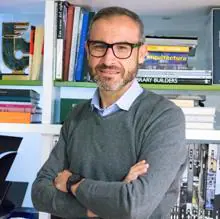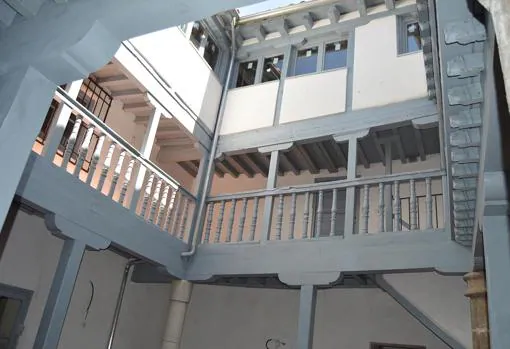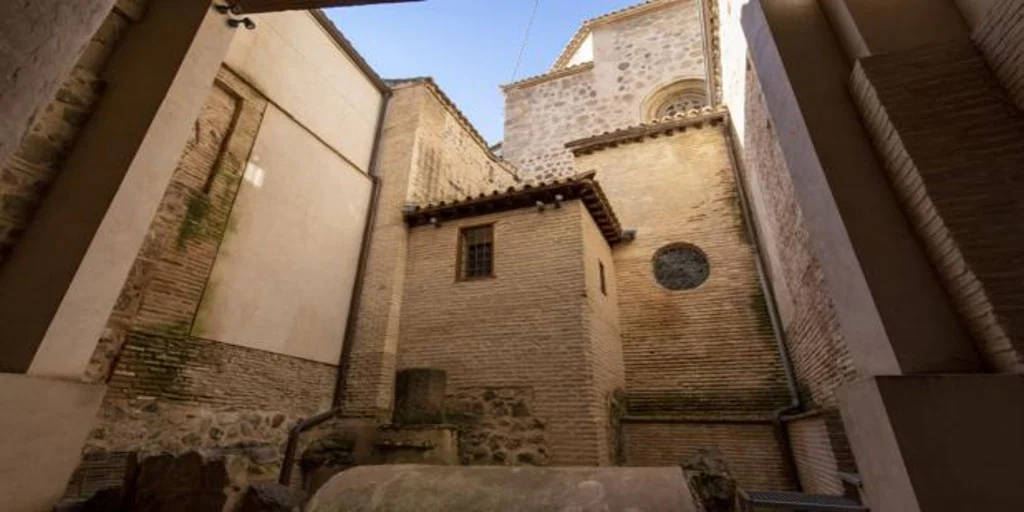Toledo
Keep
Since the financial crisis of 2008 and the bursting of the housing bubble, the construction sector It has not stopped having ups and downs. The health and social crisis caused by the Covid pandemic forced them to stop two weeks due to legal imposition and now the worrying lack of supplies threatens them again.
The health crisis, confinement and restrictions made Toledo a ghost town, with bars and shops closed and without a trace of long queues of tourists. A devastating situation and more for the capital of Castilla-La Mancha, where tourism is the main economic lung, although, paradoxically, sectors such as construction knew how to find the positive side.
A huge number of projects were stopped and now, with the end of the restrictions, they are accelerating again.
“Our work rate has been activated and now, perhaps, it is above normal,” he says. Jose Ignacio Blázquez, CEO (executive director) of Artectum. It is a company specialized in the restoration of historical heritage and in the rehabilitation of buildings of historical-artistic interest that, in their flesh, lived the two sides of a coin: being able to work better when the streets are empty, but also the sadness of see a practically ghost town.
This Talaverano is the second generation of a company founded by his father, Ignacio Blázquez, more than half a century ago and which is one of the main restorers of the old town of Toledo. In his 25-year professional career, he remembers that there have been many surprises that architecture has brought him and more, in a city like Toledo. One of the most special was undoubtedly the discovery of the “ephebus of Toledo”, a Roman statue that was found on June 21, 2017 in the excavations of the hot springs in the Plaza Amador de los Ríos after having been buried for about 1,400 years .
The discovery of unpredictable elements is, together with the delay in obtaining permits and licenses, the most common obstacle for professionals who worked in this type of work. “This leads to a possible modification in the budgets and times that you had planned a priori”, explains Blázquez, who adds: “Some obstacles, if you know how to take advantage of them, lead you to improve the finishof the work and this in restoration is a constant».

He acknowledges that restoring-rehabilitating is “much more complicated” than engaging in new construction, as it requires “more professionalism and awareness.” Even more so in the capital of Castilla-La Mancha, where it is “difficult” to work, not only because of its configuration or orography, but also because it is a “living city”, whose impulses must be respected and that, sometimes, is complicated to execute. Although planning with the local administration, “especially the municipal police” – he qualifies – makes “everything much easier and more viable.”
Its main area of activity is the old town, which has an area of 260 hectares. Witnesses of his long list of works are the church of El Salvador, the oratory of San Felipe Neri, the experimental theater room of the Teatro Rojas, the convent of the Jerónimas, the church of San Bartolomé, the Arab baths of Caballel and the Roman vaults. from Alfonso X street, among others. But they not only act in Toledo capital; The restoration works on the façade and patio of the Carmelite convent of Talavera de la Reina or the church of Sevilleja de la Jara also bear his mark.
Peculiar works
In all these years of work there have been many peculiar works. José Ignacio remembers with special affection that of the vaults of Alfonso X el Sabio street (where they found the ‘ephebo of Toledo’). «There was no direct access from the Amador de los Ríos square and we had to make a butron to be able to carry out the archaeological excavations and remove the earth by hand through that hole. In addition, we had to dismantle the scaffolding up to two occasions, because the Corpus Christi procession was passing by ”, recalls the CEO of Artectum.
And add another. «The restoration of the patio in a house on Juan Buatista Monegro street was also very peculiar. It is a very narrow alley, where only one wheelbarrow could fit. From there to the materials collection area in the Plaza de Don Fernando, 100 meters away, we had to clear the rubble and carry all the materials (wooden beams, granite columns, …) by hand. 16th century when they built that patio! ”he exclaims. “The patio had three floors and we had to scaffold the third while we worked on the lower two. In other words, the third floor, instead of resting on the pillars and beams, did so on the scaffolding. And people lived.
«I have to admit that in Artectum there is an incredible team, a team of many years that make up a great family. Thanks to them, and no one else, this type of work can be done », he congratulates himself.
Among its main clients, in addition to individuals, companies and neighborhood communities. they are the Archdiocese and the Toled Consortiumor, that in its 20 years of life it has made an investment of 120 million euros. In these four decades, the Consortium has acted on more than 4,000 homes in the Historic Center of the city and on most of its more than 120 Assets of Cultural Interest (BIC), which represent the highest concentration of assets of this nature per square meter in Spain and the second in Europe, after Rome. “Without these aid from the Consortium, there would be much less private rehabilitation, especially in neighboring communities,” says Blázquez.

With the rehabilitation, the buildings are endowed with all the comfort of the 21st century, essential to maintain the population in this old neighborhood, which, lost around 400 inhabitants per year at the end of the 20th century, while at present it remains in the 10,500 inhabitants. Even so, Blázquez reflects on the configuration and layout of the medieval Islamic city: «What for many people, including myself, is fantastic, for others it is an inconvenience that makes many flee from here or does not give them to settle down.
To avoid this loss of population, he affirms that “stronger measures would have to be taken than there are to attract people to the town, to certain areas.” “It is about restoring and rehabilitating to revitalize, bring life and, if it can be, permanent life, which is what gives it identity,” he emphasizes. “And for that,” he continues, “you have to do something tremendously purposeful and unconventional. I transfer the message not to the owners, but to the administrations, because, when they take action, the people will come ».
-How many years would it take to rehabilitate a helmet like the one in Toledo?
-The helmet is being rehabilitated continuously, it is not an operation that starts and ends. The identity of the helmet must be preserved, it must be preserved and, logically, all the elements at the heritage level. It is a process that is restored and, in a few years, it is restored again, because it wears out for different uses. It could never ever be finished, because if it did it would be very artificial.
– .

